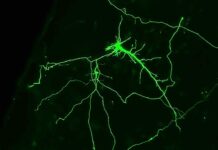The discipline of genetics, which delves into the complex study of genes and heredity, plays an indispensable role in comprehending the intricate biological processes that govern life. Recent strides in genetic technologies have heralded a newfangled era of genetics, with monumental advancements in gene editing and CRISPR technology that hold the promise to transform the field altogether.
This article seeks to delve into the crux of the new era of genetics, comprising the basics of gene editing and CRISPR technology, the probable benefits and hazards of these technologies, and the ethical implications that come with the power to manipulate the very building blocks of life.
Gene Editing Basics
Gene editing refers to the process of making precise changes to the DNA sequence of an organism. The process can be undertaken in various ways, including the use of chemicals, radiation, and enzymes. However, the most promising and accurate method of gene editing is CRISPR technology.
CRISPR, which stands for Clustered Regularly Interspaced Short Palindromic Repeats, is a system that empowers scientists to make precise modifications to DNA sequences in living organisms. This system is founded on a natural defense mechanism that bacteria employ to defend against viruses.
The CRISPR system relies on a molecule called RNA to identify specific sections of DNA that require modification. Once the RNA has identified the targeted DNA, an enzyme called Cas9 is employed to cut the DNA at that location. The DNA can then be repaired by introducing new genetic material or by adding or deleting specific sequences.
Potential Benefits of Gene Editing
Gene editing has the potential to revolutionize numerous fields, and some of the most promising applications of gene editing are:
-
Disease Prevention
Gene editing can be used to prevent or cure genetic diseases by correcting or replacing faulty genes. For example, gene editing could be used to treat diseases such as sickle cell anemia, cystic fibrosis, and Huntington’s disease.
-
Agriculture
Gene editing can be used to create crops that are more resilient to pests, drought, and other environmental stressors. This could help to enhance food security and minimize the use of pesticides and other harmful chemicals.
-
Conservation
Gene editing could be employed to help preserve endangered species by improving their resistance to disease and environmental stressors and reintroducing genetic diversity.
Potential Risks of Gene Editing
While gene editing offers numerous opportunities to revolutionize medicine, agriculture, and conservation, it also entails significant risks. The potential risks of gene editing are:
-
Off-Target Effects
One of the most significant hazards of gene editing is the possibility of unintended changes to the DNA sequence, leading to off-target effects. Such off-target effects could result in unintended consequences, such as the introduction of new diseases or genetic disorders.
-
Unknown Consequences
The long-term consequences of gene editing are not yet fully understood, and there could be unforeseen effects on the environment or on future generations.
-
Ethical Concerns
Gene editing raises a myriad of ethical concerns, including the possibility of eugenics or the use of gene editing to create so-called “designer babies” with specific traits. Additionally, there are concerns about the use of gene editing in military applications and the potential for genetic discrimination, which makes it crucial to weigh the ethical considerations of gene editing carefully.
Ethical Considerations
Manipulating the genetic makeup of living organisms raises several ethical considerations that require careful contemplation. Here are some of the key ethical considerations surrounding gene editing:
-
Informed Consent
The use of gene editing in humans raises pertinent questions about informed consent, especially when it comes to germline editing, which involves changes to the genetic makeup of future generations. It is imperative that individuals are fully aware of the risks and benefits of gene editing before consenting to the procedure.
-
Equity and Access
There are concerns that gene editing could exacerbate existing social inequalities, primarily if it is only available to those with the means to pay for it. It is crucial to ensure that access to gene editing is equitable and not used to further marginalize vulnerable populations.
-
Regulation
The use of gene editing raises questions about regulation and oversight. It is imperative to establish clear guidelines for the use of gene editing in humans, animals, and plants to ensure that the technology is used safely and ethically.
-
International Cooperation
Gene editing is a global issue, and international cooperation is vital to ensure that the technology is used in a responsible and ethical manner. It is critical to establish international standards for the use of gene editing and promote cooperation and collaboration between countries.
Conclusion
The new era of genetics presents immense potential to revolutionize medicine, agriculture, and conservation. However, it also poses significant ethical concerns. While gene editing offers exciting prospects, it is imperative that we proceed with caution and weigh the potential risks and benefits carefully.
As we continue to explore the potential of gene editing and CRISPR technology, it is vital to prioritize transparency, equity, and responsible use of these powerful tools. By doing so, we can ensure that the new era of genetics benefits all of humanity, while respecting the complex and intricate processes that govern life.
Google News | Telegram
















